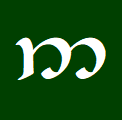6.35 to Sew Q. ser- [þ] v. “*to sew” A verb for “to sew” implied by the sobriquet Serindë “Broideress, Needlewoman, *Seamstress” of Míriel, mother of Fëanor (MR/257, PM/333). This verb is further supported by the root √THER or √SER “sew” which appeared in notes from 1957, with Tolkien preferring
Select Elvish Words 6.31-6.32: Spin, Spindle
6.31 to Spin ᴹQ. hwinya- n. “to swirl, eddy, gyrate” A verb for “to swirl, eddy, gyrate” in The Etymologies of the 1930s derived from the root ᴹ√SWIN “whirl, eddy” (Ety/SWIN). ᴱQ. qiri- v. “to stir (make spin)” A verb appearing as ᴱQ. qiri- or qirna- in the Qenya Lexicon
Select Elvish Words 6.26-6.29: Lace, Fur, Leather
6.26 Lace Q. raiwë n. “lace” A word for “lace” appearing in The Rivers and Beacon-hills of Gondor from the late 1960s from the root √RAY “net, knit, contrive network or lace, involve in a network, enlace” (VT42/12). The glossed form raiwe “lace” was deleted, but later in the same
Select Elvish Words 6.21-6.25: Cloth, Wool, Silk
6.21 Cloth ᴹQ. lanne n. “tissue, cloth” A word in The Etymologies of the 1930s glossed “tissue, cloth” based on the root ᴹ√LAN “weave” (Ety/LAN). ᴱQ. lapil n. “swathe, flowing cloth” A word appearing as ᴱQ. lapil “a swathe, a flowing cloth” in the Qenya Lexicon of the 1910s under
Select Elvish Words 6.11: to Clothe, Clothes, Seamstress
6.11 to Clothe, Dress ᴱQ. vaimata- v. “to robe, *clothe; to get dressed, put on clothing” A word appearing as ᴱQ. vaimata- “robe” in the Qenya Lexicon of the 1910s, a verb form of ᴱQ. vaima “wrap, robe” (QL/100). Neo-Quenya: Since I retain the noun ᴺQ. vaima “wrap, robe” for
Select Elvish Words 5.91-5.94: Mead, Wine, Juice
5.91 Mead Q. miruvórë n. “mead, nectar, special wine or cordial, drink of the Elves, ⚠️(lit.) precious juice, [ᴱQ.] sweet drink” The Quenya word for the special Elvish drink of Rivendell, more commonly known by its (Sindarin) name S. miruvor (LotR/290), itself a loan word from Quenya (PE17/37). The Quenya
Select Elvish Words 5.86-5.89: Milk, Cheese, Butter
5.86 Milk ᴱQ. ilimba adj. “milky” A word appearing as ᴱQ. ilimba “milky” in the Qenya Lexicon of the 1910s, an adjectival form of ᴱQ. ilin (ilim-) “milk” (QL/42). Neo-Quenya: I retain ᴺQ. ilimba “milky” for purposes of Neo-Quenya as the adjectival form of ᴺQ. ilin “milk”. ᴱQ. ilin (ilim-)
Select Elvish Words 5.81-5.85: Salt, Honey, Sugar
5.81 Salt ᴱQ. singe (singi-) n. “salt” A noun appearing as ᴱQ. {singi >>} singe “salt” in the Qenya Lexicon of the 1910s and under the early root ᴱ√SIŊI (QL/83). The contemporaneous Poetic and Mythological Words of Eldarissa had ᴱQ. singi “salt” (PME/83). Early Qenya Word-lists of the 1920s had
Select Elvish Words 5.80: Berry
5.80 Berry ᴱQ. aipio n. “cherry” A word appearing as ᴱQ. aipio “cherry, holy berry” in the Qenya Lexicon of the 1910s, a combination of ᴱ√AYA¹ and ᴱQ. pio “berry” (QL/34, 74). It was also mentioned in the contemporaneous Poetic and Mythological Words of Eldarissa and Gnomish Lexicon (PME/34; GL/18).
Select Elvish Words 5.77-5.79: Nut, Oil
5.77 Nut Q. *pecco n. “nut” In notes from 1969, Tolkien had a word Q. pekkuvo “nut-hider” = “squirrel” (PE22/155). Since √KUB was “hide” in that document, the element pek- must be “nut”. Its form outside of compounds is unclear; the form pecco is a guess, originally suggested in a




